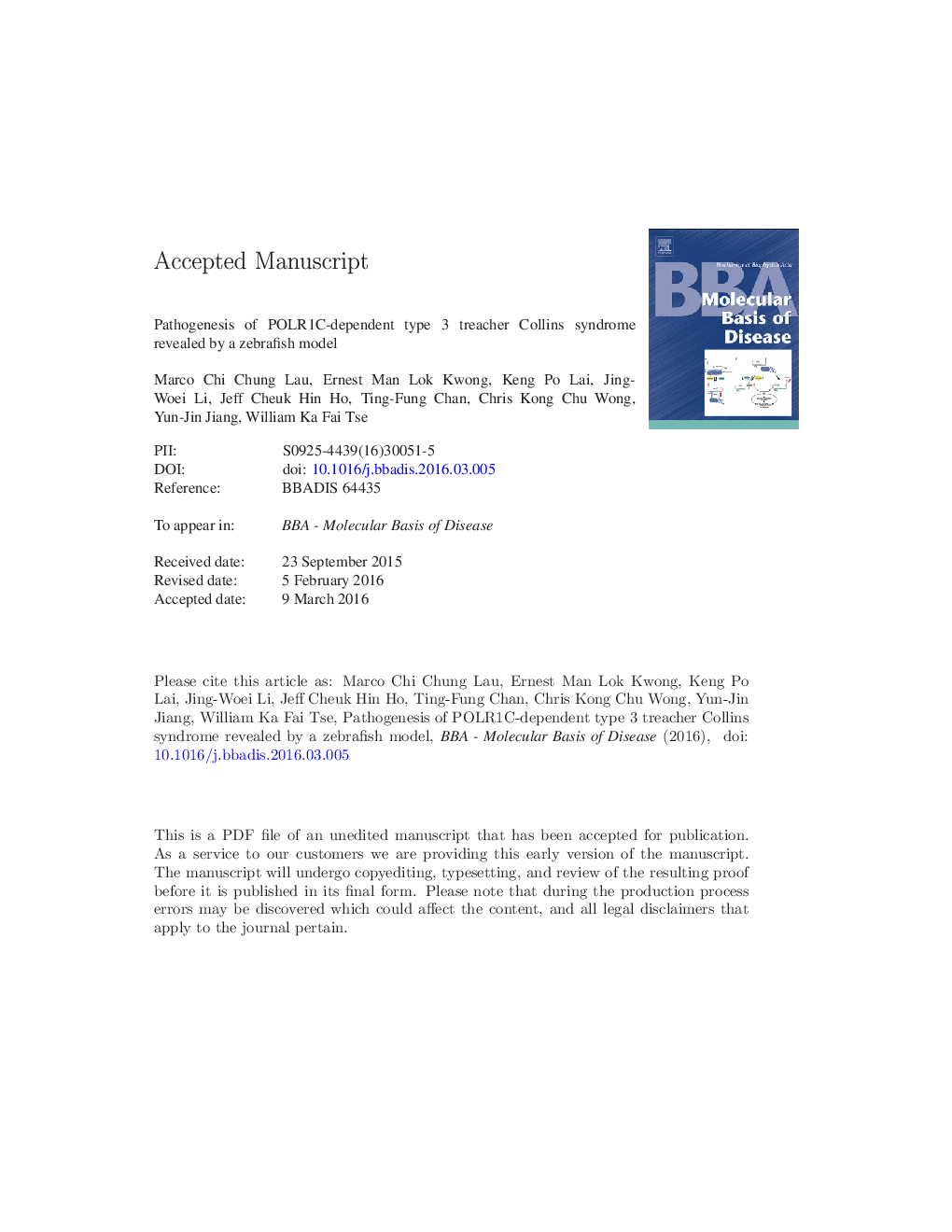| Article ID | Journal | Published Year | Pages | File Type |
|---|---|---|---|---|
| 8259281 | Biochimica et Biophysica Acta (BBA) - Molecular Basis of Disease | 2016 | 53 Pages |
Abstract
Treacher Collins Syndrome (TCS) is a rare congenital birth disorder (1 in 50,000 live births) characterized by severe craniofacial defects, including the downward slanting palpebral fissures, hypoplasia of the facial bones, and cleft palate (CP). Over 90% of patients with TCS have a mutation in the TCOF1 gene. However, some patients exhibit mutations in two new causative genes, POLR1C and POLR1D, which encode subunits of RNA polymerases I and III, that affect ribosome biogenesis. In this study, we examine the role of POLR1C in TCS using zebrafish as a model system. Our data confirmed that polr1c is highly expressed in the facial region, and dysfunction of this gene by knockdown or knock-out resulted in mis-expression of neural crest cells during early development that leads to TCS phenotype. Next generation sequencing and bioinformatics analysis of the polr1c mutants further demonstrated the up-regulated p53 pathway and predicted skeletal disorders. Lastly, we partially rescued the TCS facial phenotype in the background of p53 mutants, which supported the hypothesis that POLR1C-dependent type 3 TCS is associated with the p53 pathway.
Related Topics
Life Sciences
Biochemistry, Genetics and Molecular Biology
Ageing
Authors
Marco Chi Chung Lau, Ernest Man Lok Kwong, Keng Po Lai, Jing-Woei Li, Jeff Cheuk Hin Ho, Ting-Fung Chan, Chris Kong Chu Wong, Yun-Jin Jiang, William Ka Fai Tse,
